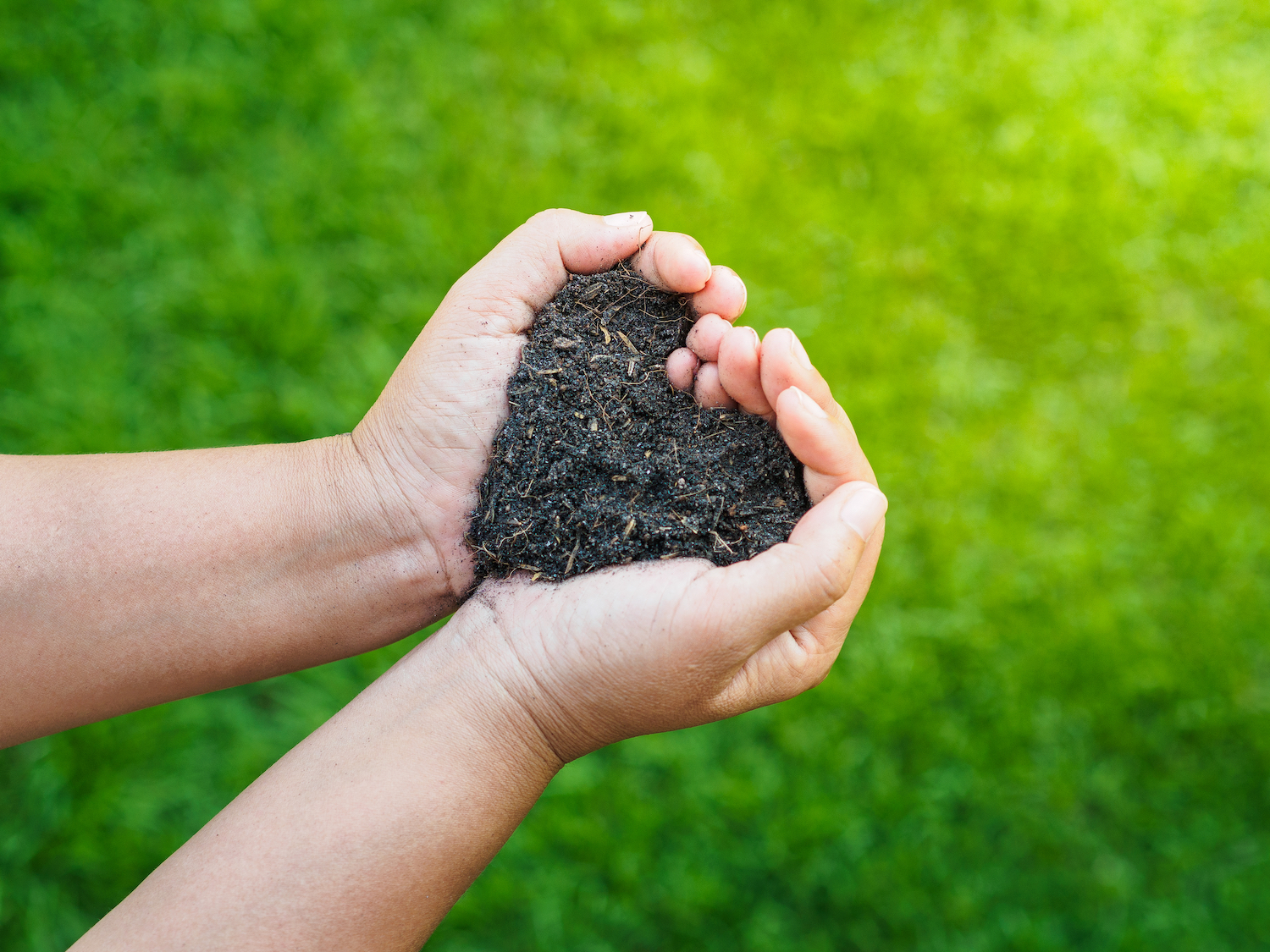

Are you eager to have a lush, green lawn that you can be proud of? You might feel as though you’re doing everything in your power to produce green grass and yet it’s still looking dull and discolored in shades of pale green, yellow, or worst of all, brown! We understand this can be incredibly frustrating.
If you find yourself wondering why is my lawn not green? then we know you’re looking for answers. It shouldn’t have to feel so elusive to achieve healthy, green grass.
The truth is, there is no magic bullet that will make the lawn greener. Instead, it’s a series of best practices that have to be combined to achieve the optimal results. While people often want to pin it all on one thing, it really is a multi-faceted approach.
To help you along, we’ve rounded up all of our best tips to help make your lawn greener.
Watering is incredibly important to the overall health of your lawn. While lawns are naturally resilient, one thing they simply can’t live without is water. If you aren’t giving your lawn enough water, then it’s not going to look as bright and green as it could. We generally recommend around 1 to 2 inches of water per week for common grass species in Memphis, TN and Northern MS like Bermudagrass, Zoysia, and Turf Type Tall Fescue.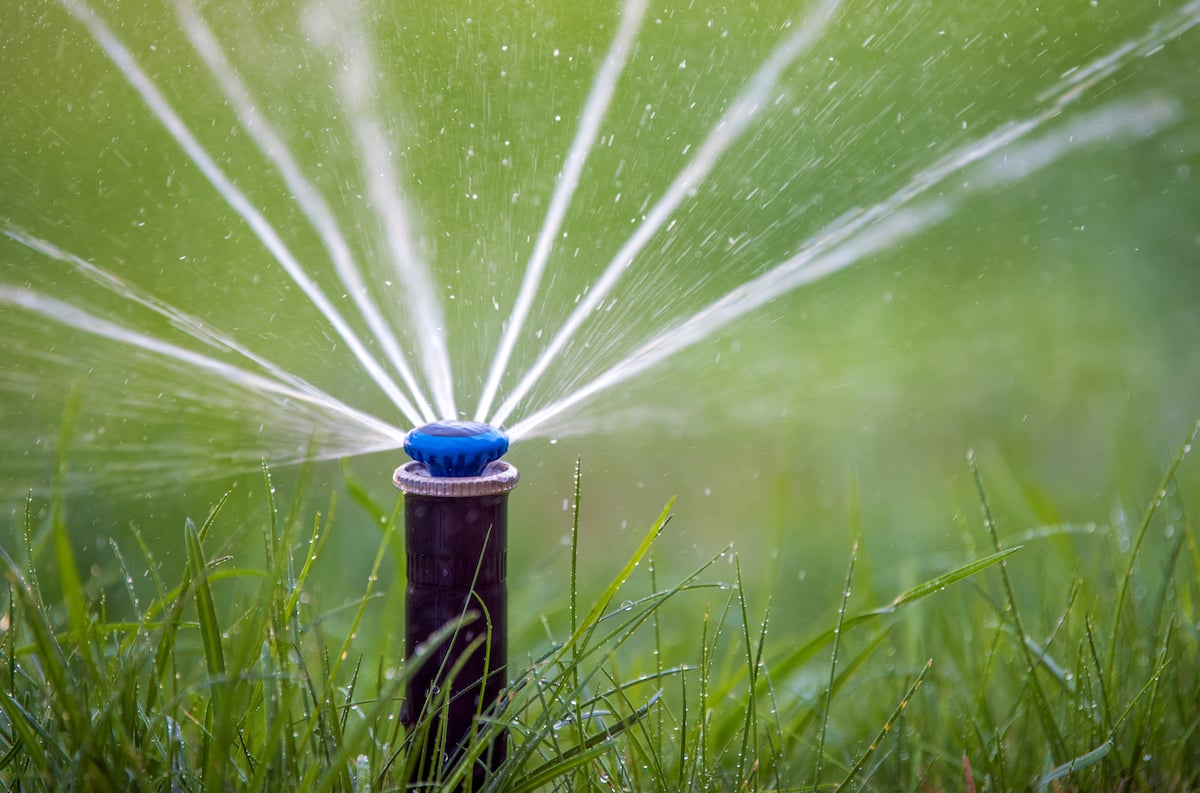
Of course, you don’t want to overwater your lawn, either. We find that homeowners tend to assume you can’t water too much, but this simply isn’t the case. When you overwater your lawn you can drown the roots. This can cause the lawn to turn yellow and wilt as it struggles. Sometimes people see a yellow lawn and automatically assume it is drought-stricken (when in reality it’s overwatered) and contribute to the problem. But if you notice your lawn is yellow and squishy, it’s overwatered.
When it comes to how to make the lawn greener, ensuring that you’re mowing properly is also important. A lot of people don’t recognize that there is a right and a wrong way to mow their lawn. It’s a simple enough task, but mistakes can still be made.
The vast majority of the time, homeowners mow their lawn too short. When this occurs, you can really put a lot of stress on the grass. As it struggles to recover from such a drastic cut, it will turn yellow.
The ideal cut height will depend upon the type of grass that you have.
Here are some of our recommendations.
In addition to cut height, also make sure that you aren’t mowing your lawn with dull blades. This can also put stress on your lawn. You want to make sure that you’re using a sharp blade that will make a nice, clean cut.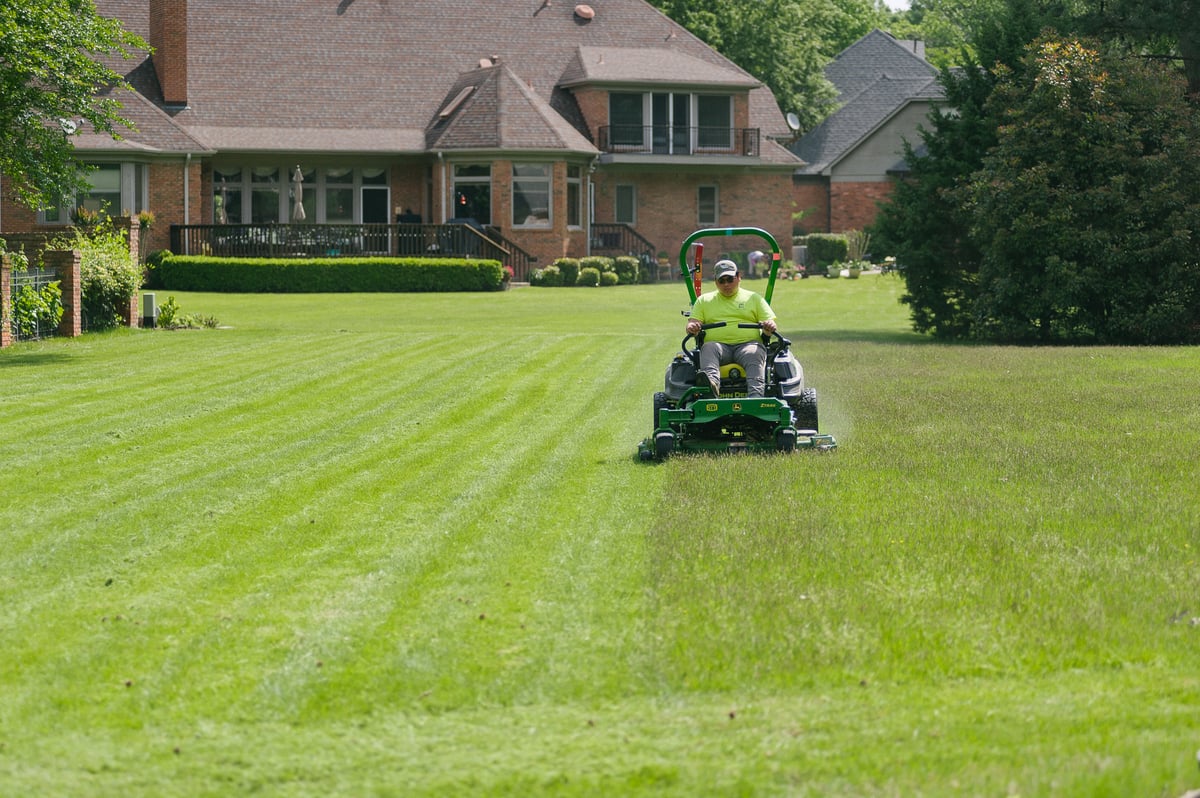
Aeration has been called “the secret to the best lawn,” because a lot of people don’t realize just how important it is to achieving optimal results. It’s not actually a secret. The service is right on our website, but we do find that homeowners sometimes think it’s something they can skip.
When it comes to making your lawn greener, aeration helps by allowing it to “breathe.” By making holes and pulling out small soil plugs (cores), it allows more oxygen, water, and nutrients to penetrate deep into the soil and make their way to the root zone, where they’re needed most. As the roots grow healthy and strong, your lawn will grow thicker and greener.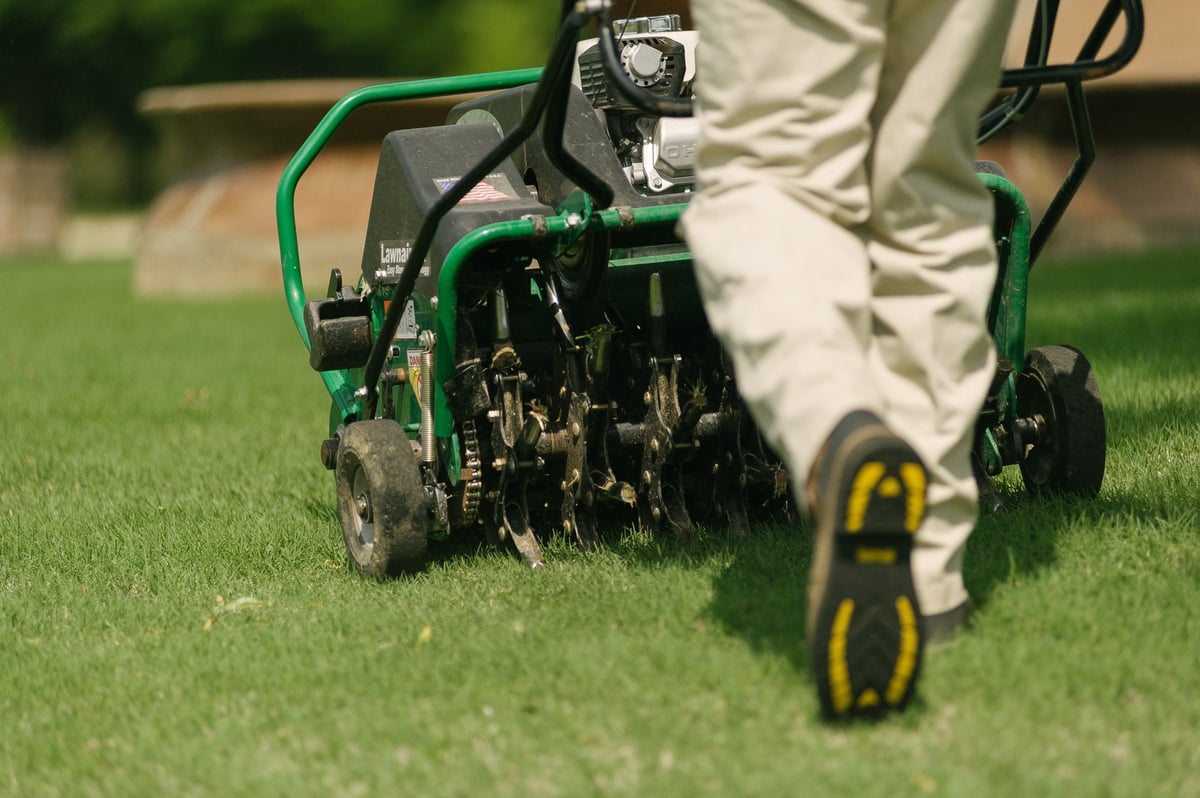
Fertilization is important because lawns naturally fall short of all the nutrients they need to perform their best. Fertilization helps to restore these nutrients. However, the amount of fertilizer used is important. If you (or your lawn care company) is skimping, then your results can be subpar.
It’s also important to use a high-quality product. While it’s true that you can purchase lawn fertilization products on your own, you should know that professional fertilizers are more than just the N-P-K combination that many “over the counter products” use. Some of the professional formulations also have additional micronutrients, bio-nutritional materials, and coatings for slower release. This is going to help you get better (greener) results.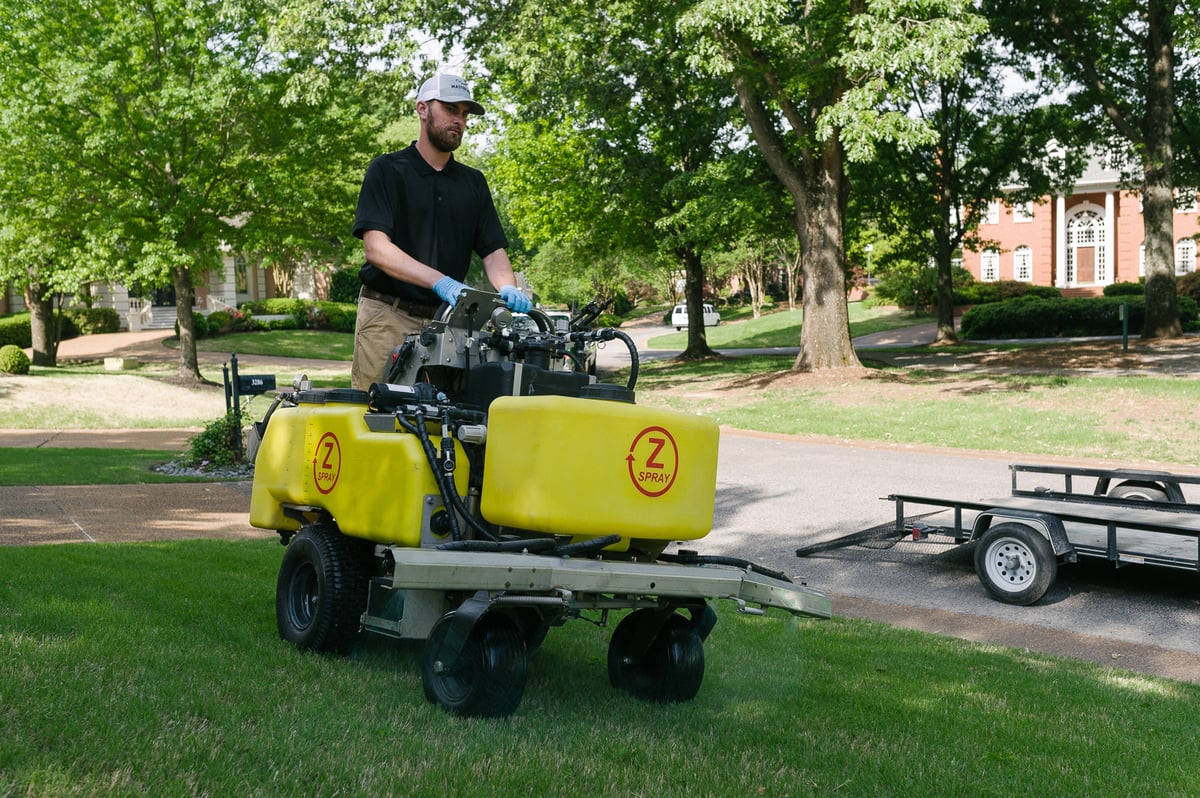
If you are wondering why is my lawn not green, it could be that you have some species of undesirable grasses growing. There are a number of different grass types which are pale or different shades of green—and are not intended to be in your lawn.
In Memphis, TN and Northern MS, we deal with a number of different grassy weeds. The ones that we see most often are goosegrass, crabgrass, nutsedge, dallisgrass, bahiagrass, and foxtail. All of these grasses have different shades of green that can stand out like a sore thumb if they wind up in your lawn.
If the health of your soil is struggling, the health of your lawn will, too. After all, turf is only as healthy as the soil it’s growing in.
The addition of bionutritional stimulants can also make a tremendous difference in the color of your grass. The introduction of these microorganisms, like fungi and bacteria, will help the lawn to digest nutrients.
These microorganisms help to strengthen your lawn against disease and pests, which can also impact turf health. Healthy biologically active soil has a diverse array of this microscopic life. When it’s included in your lawn care program, it can help improve your lawn’s health and color.
As we mentioned, the health of your lawn can also be impacted by problems like disease and insects. For instance, there are a number of funguses that can really wreak havoc on your lawn. Fungal infections can impact your lawn’s color, causing it to turn yellow (and possibly brown) as it struggles.
In addition, in the early stages of insect damage, your grass can appear wilted, then yellow, and ultimately brown. There are both surface-feeding insects as well as subsurface-feeding lawn grubs which can cause trouble. 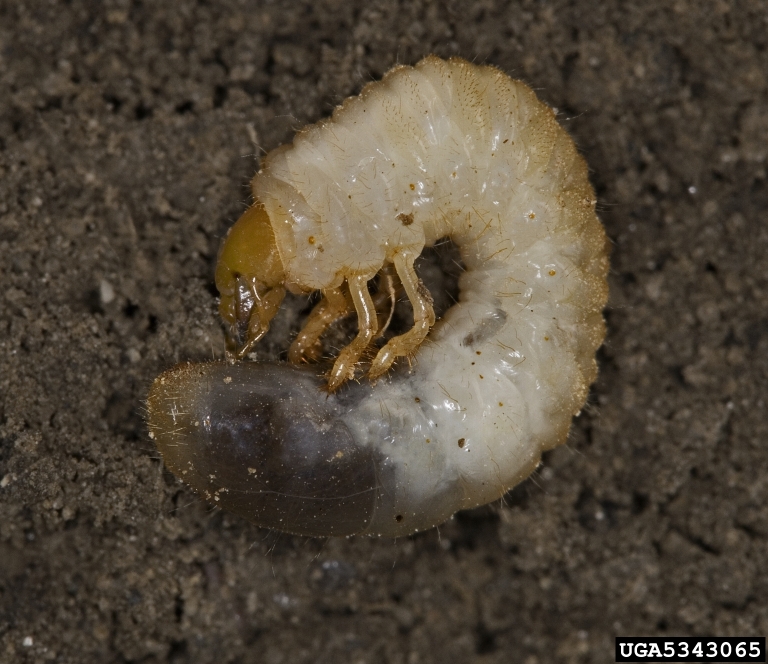
It’s important that a lawn care professional gets to the bottom of what’s going on in your lawn so that the problem can be remedied.
While these are some of the most common reasons why you may be struggling with a lawn that’s not green enough, it’s important to recognize that it’s not a complete list. On top of that, many of these symptoms and problems mimic one another, so it can be difficult to get to the bottom of exactly what’s going on. Even if you feel like you’re doing everything right on your end, perhaps you have an undiagnosed pest or disease problem that’s working against you.
This is what makes a proper diagnosis so critical. Without a proper diagnosis, you can’t implement a solution.
As we mentioned early on, a green and healthy lawn truly does require a multifaceted effort. That means you can’t make just one or two of these improvements. They all need to work together.
At Master Lawn, we have helped many homeowners who have had frustrations about their lawn’s color. Whether it was a DIYer or someone who was working with another lawn care company, we’ve been able to help them get to the bottom of why their lawn wasn’t as green as it could be. That has included making a diagnosis of problems, implementing a well-rounded lawn care program, and providing cultural recommendations of things the homeowner could do on their end.
If you find yourself wishing, “make my lawn greener,” then we’re here to make that our command.
Ready to have the greener lawn you’ve been wishing for? Talk to a lawn care expert, choose from 3 program options, and become the master of your lawn.
Image source: lawn grub
Michael Hatcher is Founder / Chairman of Michael Hatcher & Associates.
These Stories on Lawn Care
8255 Center Hill Rd
Olive Branch, MS 38654
8164 MS-178
Olive Branch, MS 38654
Phone: (901) 445-9336
Fax: (901) 853-7353
Copyright © 2025 Master Lawn | All Rights Reserved.